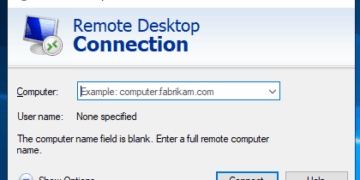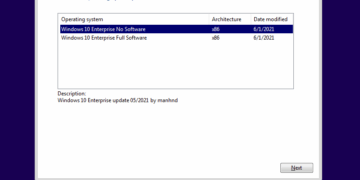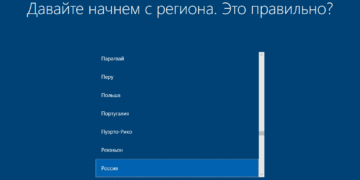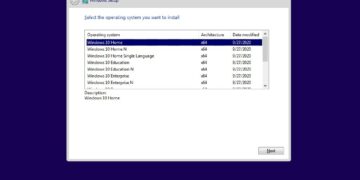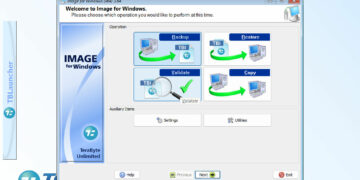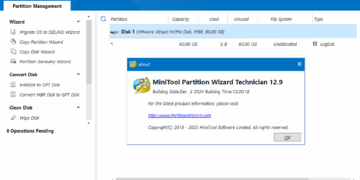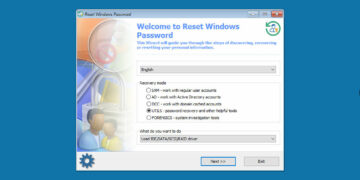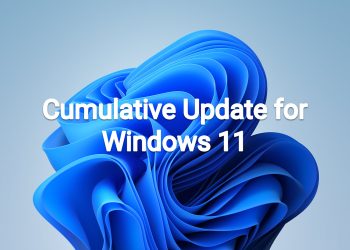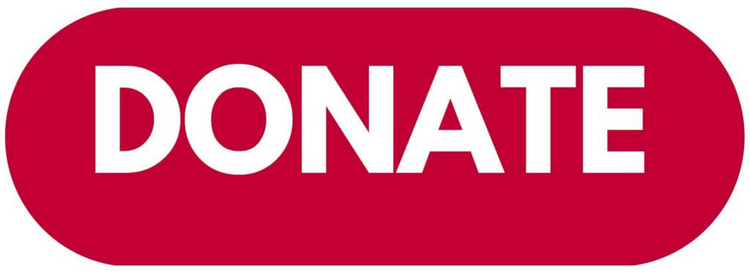October 11, 2022—KB5018410 (OS Builds 19042.2130, 19043.2130, and 19044.2130)
NEW 10/11/22
IMPORTANT All editions of Windows 10, version 21H1 will reach end of service on December 13, 2022. After December 13, 2022, these devices will not receive monthly security and quality updates. These updates contain protections from the latest security threats. To continue receiving security and quality updates, we recommend that you update to the latest version of Windows.
8/26/22
REMINDER Windows Server, version 20H2 reached end of service on August 9, 2022. After August 9, 2022, these devices will no longer receive monthly security and quality updates that contain protection from the latest security threats. To continue receiving security and quality updates, Microsoft recommends updating to the latest version of Windows Server.
We will continue to service the following editions: Windows 10 Enterprise and Education, Windows 10 IoT Enterprise, Windows 10 Enterprise multi-session, and Windows 10 on Surface Hub.
5/10/22
REMINDER To update to one of the newer versions of Windows 10, we recommend that you use the appropriate Enablement Package KB (EKB). Using the EKB makes updating faster and easier and requires a single restart. To find the EKB for a specific OS, go to the Improvements section and click or tap the OS name to expand the collapsible section.
11/17/20
For information about Windows update terminology, see the article about the types of Windows updates and the monthly quality update types. For an overview of Windows 10, version 20H2, see its update history page.
Note Follow @WindowsUpdate to find out when new content is published to the Windows release health dashboard.
Highlights
- We address security issues for your Windows operating system.
Improvements
Note To view the list of addressed issues, click or tap the OS name to expand the collapsible section.
Windows 10, version 21H2
Important: Use EKB KB5003791 to update to Windows 10, version 21H2.
This security update includes quality improvements. Key changes include:
- This build includes all the improvements from the supported Windows 10, version 20H2 editions.
- No additional issues were documented for this release.
Windows 10, version 21H1
Important: Use EKB KB5000736 to update to Windows 10, version 21H1.
This security update includes quality improvements. Key changes include:
- This build includes all the improvements from the supported Windows 10, version 20H2 editions.
- No additional issues were documented for this release.
Windows 10 servicing stack update – 19042.1940, 19043.1940, and 19044.1940
Known issues in this update
| Symptom | Workaround |
| Devices with Windows installations created from custom offline media or custom ISO image might have Microsoft Edge Legacy removed by this update, but not automatically replaced by the new Microsoft Edge. This issue is only encountered when custom offline media or ISO images are created by slipstreaming this update into the image without having first installed the standalone servicing stack update (SSU) released March 29, 2021 or later.
Note Devices that connect directly to Windows Update to receive updates are not affected. This includes devices using Windows Update for Business. Any device connecting to Windows Update should always receive the latest versions of the SSU and latest cumulative update (LCU) without any extra steps. |
To avoid this issue, be sure to first slipstream the SSU released March 29, 2021 or later into the custom offline media or ISO image before slipstreaming the LCU. To do this with the combined SSU and LCU packages now used for Windows 10, version 20H2 and Windows 10, version 2004, you will need to extract the SSU from the combined package. Use the following steps to extract the SSU:
If you have already encountered this issue by installing the OS using affected custom media, you can mitigate it by directly installing the new Microsoft Edge. If you need to broadly deploy the new Microsoft Edge for business, see Download and deploy Microsoft Edge for business.
|
| After installing this update, file copies using Group Policy Preferences might fail or might create empty shortcuts or files using 0 (zero) bytes. Known affected Group Policy Objects are related to files and shortcuts in User Configuration > Preferences > Windows Settings in Group Policy Editor.
|
To mitigate this issue, you can do ONE of the following:
We are working on a resolution and will provide an update in an upcoming release. |
How to get this update
Before installing this update
Microsoft now combines the latest servicing stack update (SSU) for your operating system with the latest cumulative update (LCU). For general information about SSUs, see Servicing stack updates and Servicing Stack Updates (SSU): Frequently Asked Questions.
Prerequisite:
Based on your installation scenario, choose one of the following:
- For offline OS image servicing:If your image does not have the March 22, 2022 (KB5011543) or later LCU, you must install the special standalone May 10, 2022 SSU (KB5014032) before installing this update.
- For Windows Server Update Services (WSUS) deployment or when installing the standalone package from Microsoft Update Catalog:If your devices do not have the May 11, 2021 (KB5003173) or later LCU, you must install the special standalone August 10, 2021 SSU (KB5005260) before installing this update.
Install this update
| Release Channel | Available | Next Step |
| Windows Update and Microsoft Update | Yes | None. This update will be downloaded and installed automatically from Windows Update. |
| Windows Update for Business | Yes | None. This update will be downloaded and installed automatically from Windows Update in accordance with configured policies. |
| Microsoft Update Catalog | Yes | To get the standalone package for this update, go to the Microsoft Update Catalog website. |
| Windows Server Update Services (WSUS) | Yes | This update will automatically sync with WSUS if you configure Products and Classifications as follows:
Product: Windows 10, version 1903 and later Classification: Security Updates |
If you want to remove the LCU
To remove the LCU after installing the combined SSU and LCU package, use the DISM/Remove-Package command line option with the LCU package name as the argument. You can find the package name by using this command: DISM /online /get-packages.
Running Windows Update Standalone Installer (wusa.exe) with the /uninstall switch on the combined package will not work because the combined package contains the SSU. You cannot remove the SSU from the system after installation.
File information
For a list of the files that are provided in this update, download the file information for cumulative update 5018410.
For a list of the files that are provided in the servicing stack update, download the file information for the SSU – version 19042.1940, 19043.1940, and 19044.1940.
Download links
MSU file from Microsoft Update Catalog
Download KB5018410 MSU for Windows 10 v20H2, v21H1, and v21H2 32-bit (x86) – 352.4 MB
Download KB5018410 MSU for Windows 10 v20H2, v21H1, and v21H2 64-bit (x64) – 683.1 MB
Download KB5018410 MSU for Windows 10 v20H2, v21H1, and v21H2 ARM64 – 706.7 MB
UUP Dump
32-bit (x86) ISO download: Select language for Feature update to Windows 10, version 21H2 (19044.2130) x86 – UUP dump
64-bit ISO download: Select language for Feature update to Windows 10, version 21H2 (19044.2130) amd64 – UUP dump
ARM64 ISO download: Select language for Feature update to Windows 10, version 21H2 (19044.2130) arm64 – UUP dump

